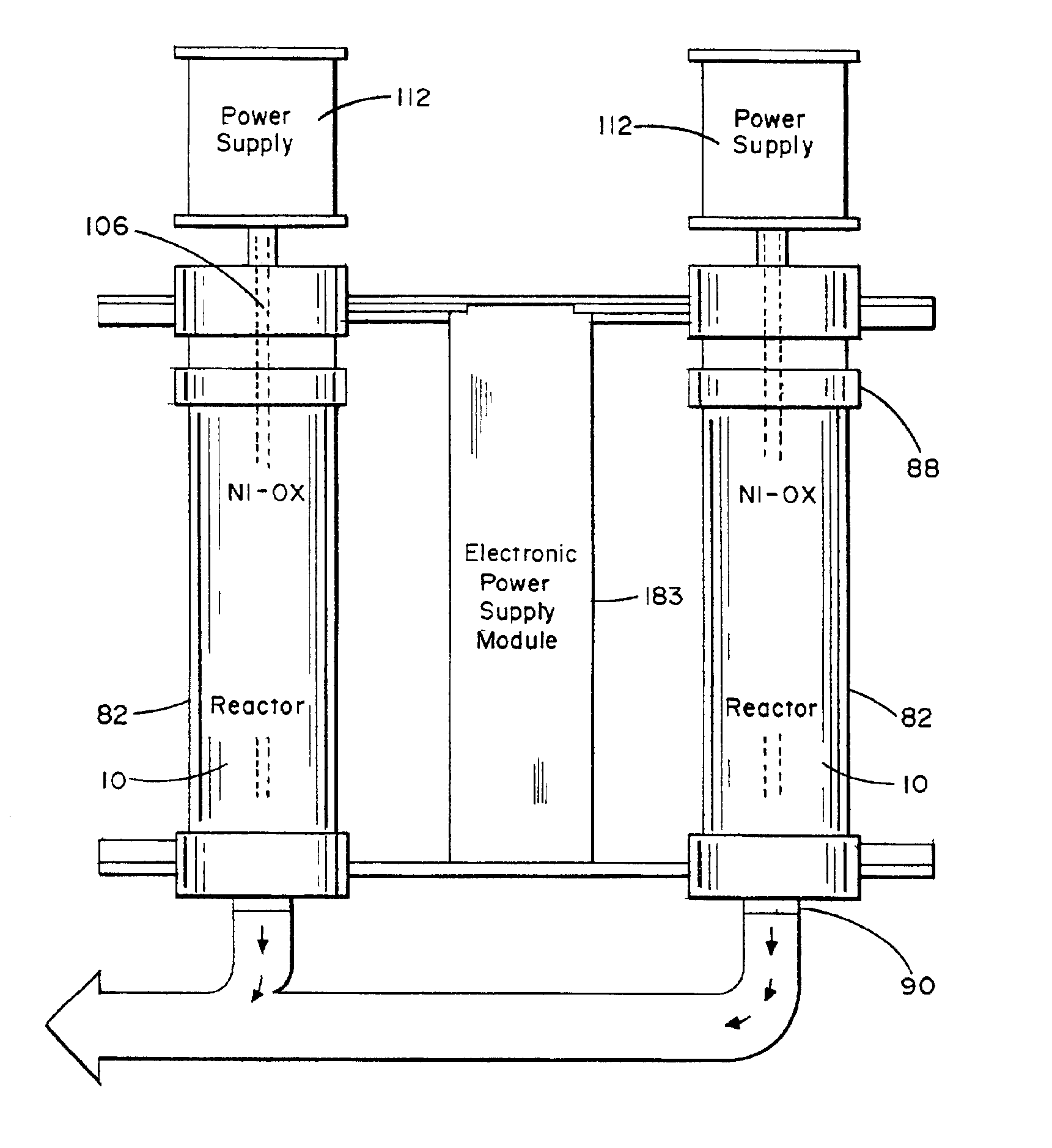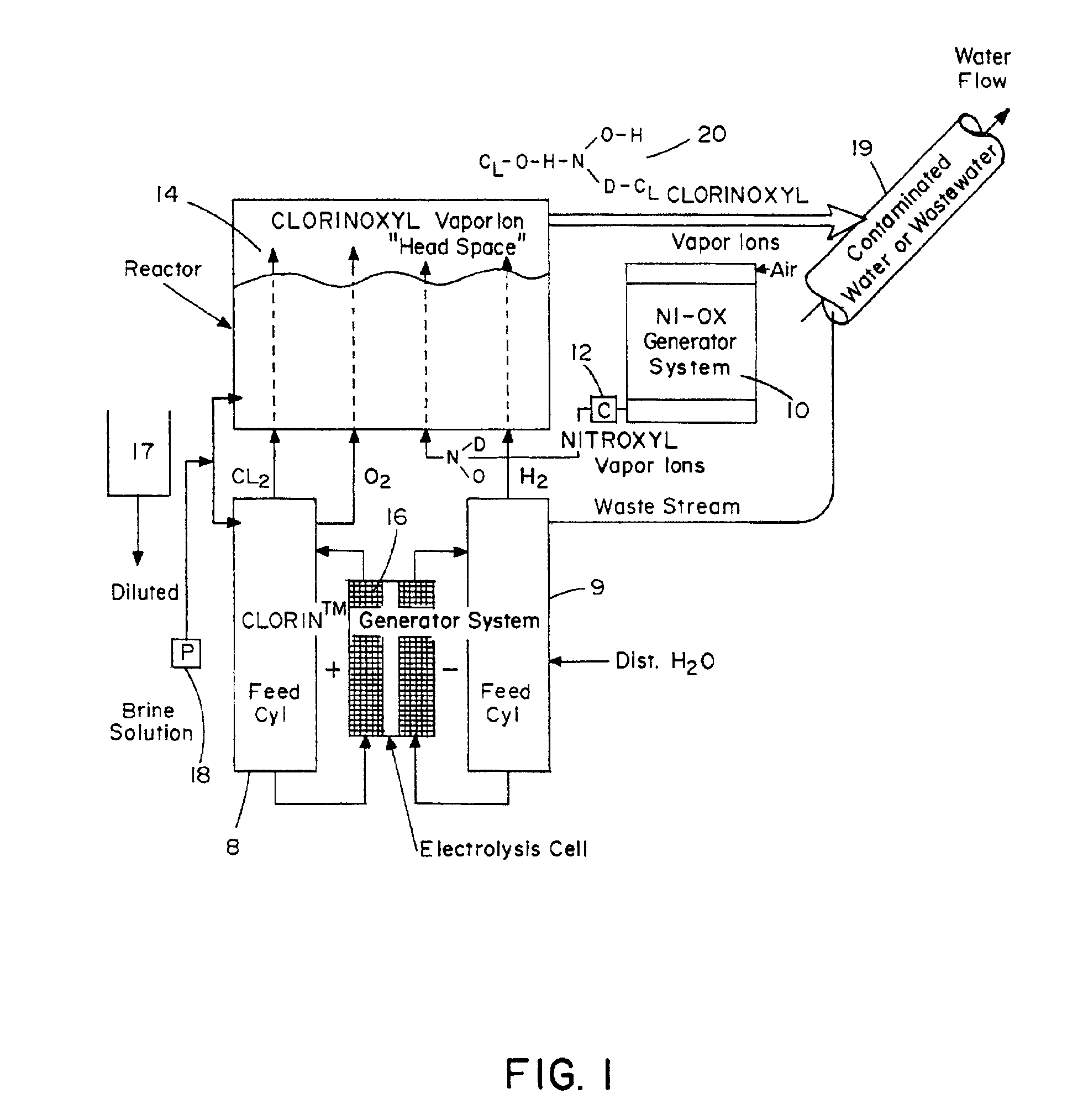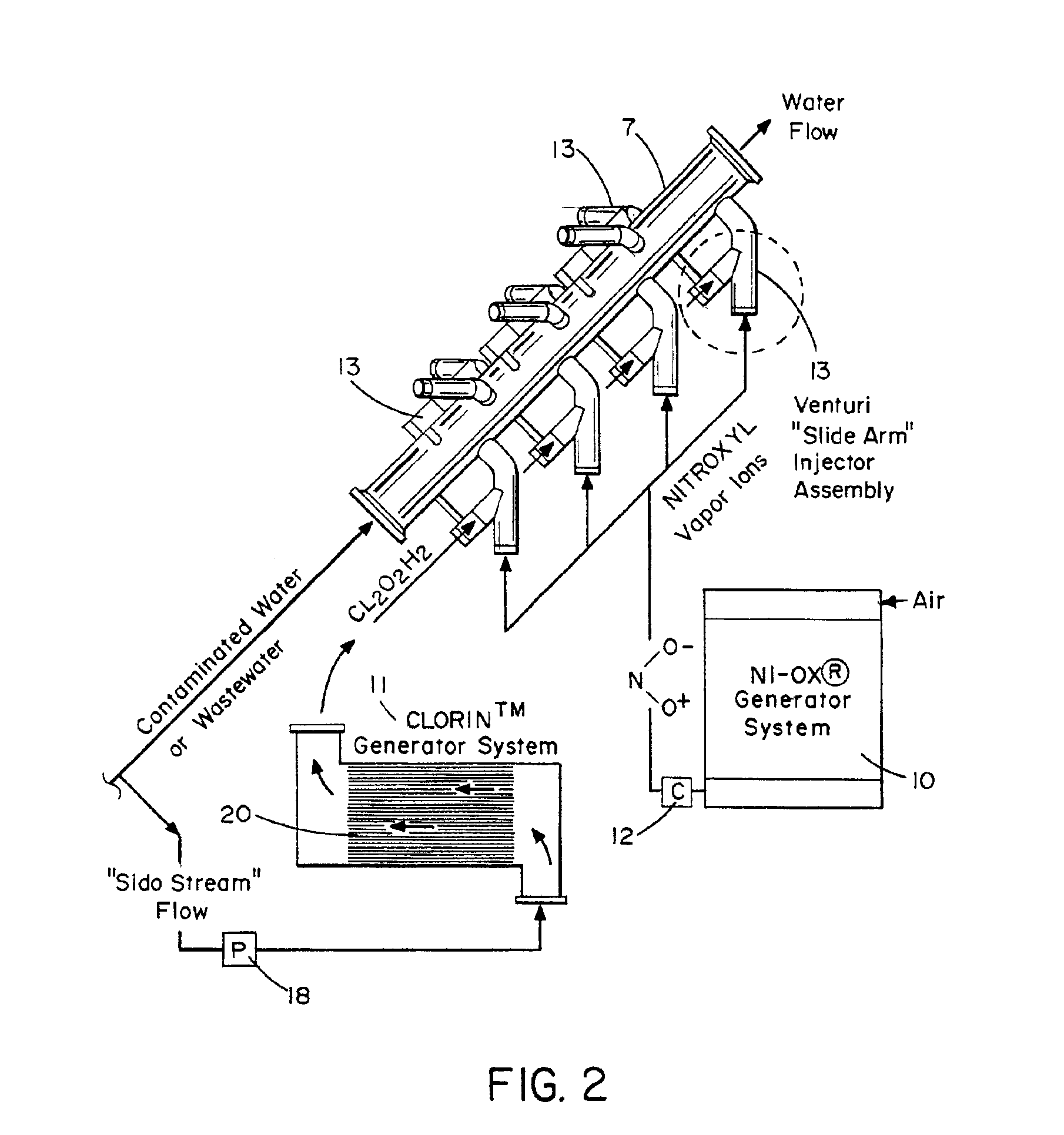Treating
ballast water is a new legal requirement and there have not been any proven technologies that can remove all of the life forms in sea water.
1. Non-regeneratable modular filters are one time use, short-term devices of inexpensive
cartridge design that have restrictive low-flow and high head-loss pressure limitations. Typical filter materials are packed
cellulose or fibrous / filament textiles that, at best, provide (at optimal flow) no better than a continuous 5-10 micron absolute particle size separation. Minor recognizable
suspended solids in the water influent flow will quickly clog the
filter media material within the
cartridge and render the
filter system involved inoperable. Where moderate and high flow rates are involved, replacement costs and down time are inordinately costly and burdensome. Further, these filters and separation units are usually non-compatible and fairly short-lived if an attempt is made to combine them with oxidizing and
corrosive chemical treatment agents within the
contaminated water to be purified.
2.
Chemical treatment methods typically include use of one or more of oxidizers, polymers, flocculants, and coagulants, and may also include use of
chlorine for disinfection and sterilization. These methods are cost prohibitive and labor-intensive and can require high maintenance, as if misused they can damage the associated
waste treatment equipment component(s)
system. Further, various chemical treatments involve health and safety risks leading to restrictions on their use and reduction of permitted
exposure. Commonly,
chemical process treatment methods lead to the generation of voluminous amounts of
toxic chemical solids and sludges along with the associated
environmental exposure problems; further, these methods may involve liability issues and
regulatory agency controls due to the necessity of disposal of these hazardous substances.
3.
Ozone generators, e.g., as conventionally offered as “
Corona-Arc Generation” disinfection and treatment systems provide a
high voltage electric arc or
corona. These open spark discharges are potentially dangerous. Moreover, these systems require fairly high power and have relatively high maintenance requirements, and are expensive to operate in that they require a supply of low-
humidity air (leading to continuous desiccators and dryer maintenance requirements) and further require high maintenance air-separation
oxygen concentrator equipment. Problems due to potentially toxic
exposure to
ozone can also exist.
4.
Reverse osmosis (R.O.) treatment systems, involving membrane separation of sub-micron particles from water, often present problems associated with shortened membrane life due to plugging, limited process flow capacity, and the necessity of disinfection of the membrane(s) so as to be free from contaminating biological agents and / or oily materials. R.O. membranes are also highly susceptible to
fouling with
biological growth; further, R.O. treatment systems are costly both as to
initial cost and in operation, as they require substantial electrical power to provide the
high pressure needed for operation, and due to their high maintenance requirements.
5. Traditional
filtration systems employ one or more of carbon,
anthracite, clay,
coal, paper, fibrous materials, “mixed media”, and / or sand as a physical removal method, that is, to establish a solids separation and
filtration process. These systems often involve operational problems such as early
fouling of the
filtration media, which often requires very frequent filter back-washing and adds difficulties inherent in the disposal of large quantities of the backwashed materials. The back-
wash water may be very biologically active and also require disinfection, due to “bleed through” bacterial recontamination of the water being treated. Quite often, in order to maintain a steadystate level of solids removal and continuous purification efficiencies, the entire volume of filtration materials must be removed and replaced several times per year due to encrustment and
contamination.
6.
Ion exchange filters basically remove only dissolved ions and electrically charged colloidal solids; they rapidly
plug in the presence of
suspended solids. Even a moderate flow (50-100 GPM)
ion exchange
filter system represents a complex plumbing network involving unwieldy resin filter and / or “
zeolite staged” containers and requires large regenerative acid and base tankage. Regeneration of the filter resin is complicated and is often incomplete due to the plugging of the resin pore spaces by the larger particle size
suspended solids that
gain entry into the flow. These systems have substantial flow rate restrictions limiting their practicality for larger commercial or general-purpose use. Thus,
ion exchange filtration is suitable only for very select
water treatment or specific wastewaters and also often involves high
capital equipment purchase cost in addition to high repetitive media replacement and
operational costs.
7. Ultra
violet light has been utilized but it can only remove
virus and
bacteria and not the more complex light forms. This method also requires very clear water or there will be no disinfection.
 Login to View More
Login to View More 


